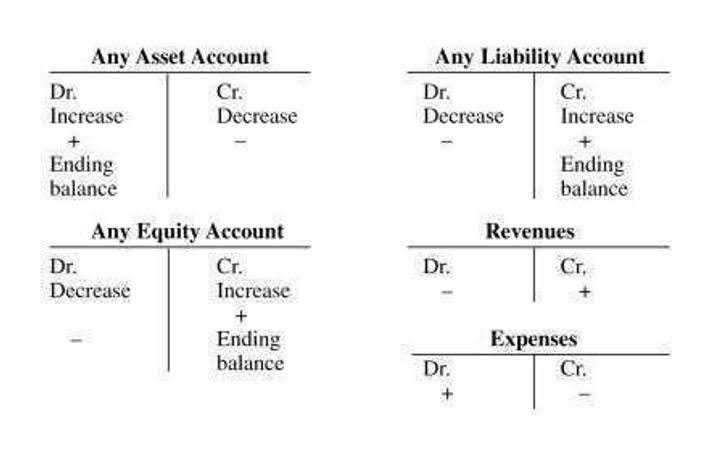
It’s sometimes called accumulated earnings, earnings surplus, or unappropriated profit. Retained earnings represent the portion of net profit on a company’s income statement that is not paid out as dividends. These retained earnings are often reinvested in the company, such as through research and development, equipment replacement, or debt reduction. Retained earnings are affected by an increase or decrease in the net income and amount of dividends paid to the stockholders. Thus, any item that leads to an increase or decrease in the net income would impact the retained earnings balance.
Real Company Example: Coca-Cola Retained Earnings Calculation
As for the “Downside Case”, the ending balance declined from $240 million in Year 0 to $95 million by the end of Year 5 – even with the company attempting to offset the steep losses by gradually cutting off the dividend payments. accumulated retained earnings From there, the company’s net income—the “bottom line” of the income statement—is added to the prior period balance. The steps to calculate retained earnings on the balance sheet for the current period are as follows.
Accumulated Earnings Credit
The higher the retained earnings of a company, the stronger sign of its financial health. Negative retained earnings are a sign of poor financial health as it means that a company has experienced losses in the previous year, specifically, a net income loss. One year of negative retained earnings does not signal a company in complete poor financial health, but if retained earnings have consistently been negative, then a company https://www.bookstime.com/ has not been able to generate a profit for a long time. Retained earnings are reported under the shareholder equity section of the balance sheet while the statement of retained earnings outlines the changes in RE during the period. The statement of accumulated earnings summarizes changes in accumulated earnings for a fiscal period, and total accumulated earnings appears in the shareholders’ equity portion of the balance sheet.

What Is the Difference Between Retained Earnings and Dividends?
- Retained earnings represent the profit a company has saved over time and therefore the portion that can be used to reinvest in the business (in new equipment, R&D, or marketing, among others) or distributed to shareholders.
- Typically, the net profit earned by your business entity is either distributed as dividends to shareholders or is retained in the business for its growth and expansion.
- Additional paid-in capital is included in shareholder equity and can arise from issuing either preferred stock or common stock.
- As a result, any factors that affect net income, causing an increase or a decrease, will also ultimately affect RE.
- The accumulated earnings tax is a tax imposed by the U.S. government on corporations with retained earnings that are deemed to be excessive.
Retained Earnings are reported on the balance sheet under the shareholder’s equity section at the end of each accounting period. To calculate RE, the beginning RE balance is added to the net income or reduced by a net loss and then dividend payouts are subtracted. A summary report called a statement of retained earnings is also maintained, outlining the changes in RE for a specific period. Retained earnings are the portion of a company’s net income that management retains for internal operations instead of paying it to shareholders in the form of dividends.
Everything You Need To Master Financial Statement Modeling
Bench financial statements can help you find ways to grow your business and cut costs. If an investor is looking at December’s financial reporting, they’re only seeing December’s net income. But retained earnings provides a longer view of how your business has earned, saved, and invested since day one. Shareholders equity—also stockholders’ equity—is important if you are selling your business, or planning to bring on new investors. In that case, they’ll look at your stockholders’ equity in order to measure your company’s worth.

How Dividends Impact Retained Earnings
- Where cash dividends are paid out in cash on a per-share basis, stock dividends are dividends given in the form of additional shares as fractions per existing shares.
- Also, this outflow of cash would lead to a reduction in the retained earnings of the company as dividends are paid out of retained earnings.
- Finally, record any dividends paid during the period as a debit to the retained earnings account and a credit to the cash account.
- The decision to retain earnings or to distribute them among shareholders is usually left to the company management.
- Also, keep in mind that the equation you use to get shareholders’ equity is the same you use to get your working capital.
- Retained earnings are like a running tally of how much profit your company has managed to hold onto since it was founded.
It is calculated over a period of time (usually a couple of years) and assesses the change in stock price against the net earnings retained by the company. In the long run, such initiatives may lead to better returns for the company shareholders instead of those gained from dividend payouts. Paying off high-interest debt also may be preferred by both management and shareholders, instead of dividend payments. Retained earnings are also called earnings surplus and represent reserve money, which is available to company management for reinvesting back into the business.
Common Accounting Issues (Plus Straightforward Solutions)

How to Calculate Retained Earnings: A Clear Guide for Businesses
- Moreover, management must judiciously allocate retained earnings to maximize the company’s growth and shareholder value.
- Accordingly, each shareholder has additional shares after the stock dividends are declared, but his stake remains the same.
- The dotted red box in the shareholders’ equity section on the balance sheet is where the retained earnings line item is recorded.
- One significant limitation is that retained earnings cannot be used to evaluate the company’s overall cash flow or liquidity position.
- When expressed as a percentage of total earnings, it is also called the retention ratio and is equal to (1 – the dividend payout ratio).
- The amount of a corporation’s retained earnings is reported as a separate line within the stockholders’ equity section of the balance sheet.
- If you don’t pay dividends, you can ignore this part and substitute $0 for this portion of the retained earnings formula.
